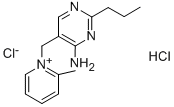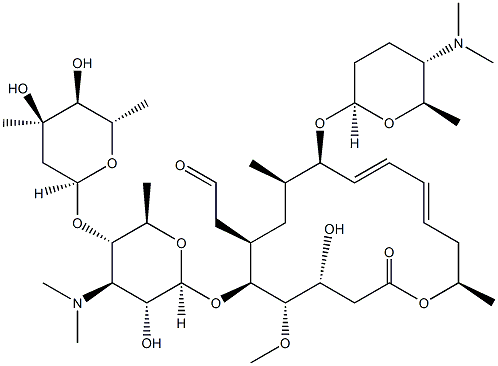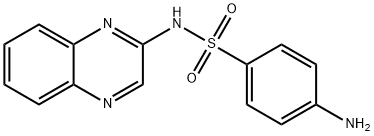Amprolium HCl , ≥98% , 137-88-2
Synonym(s):
1-([4-Amino-2-propyl-5-pyrimidinyl]methyl)-2-methylpyridinium chloride
CAS NO.:137-88-2
Empirical Formula: C14H20Cl2N4
Molecular Weight: 315.24
MDL number: MFCD00078831
EINECS: 205-307-5
| Pack Size | Price | Stock | Quantity |
| 1g | RMB23.20 | In Stock |
|
| 5G | RMB59.20 | In Stock |
|
| 25G | RMB217.60 | In Stock |
|
| 100G | RMB745.60 | In Stock |
|
| others | Enquire |
PRODUCT Properties
| Melting point: | 239.0 to 243.0 °C |
| storage temp. | Inert atmosphere,Room Temperature |
| solubility | Methanol (Slightly), Water (Slightly) |
| form | Powder |
| color | White to Off-white |
| BRN | 4118699 |
| InChI | InChI=1S/C14H19N4.2ClH/c1-3-6-13-16-9-12(14(15)17-13)10-18-8-5-4-7-11(18)2;;/h4-5,7-9H,3,6,10H2,1-2H3,(H2,15,16,17);2*1H/q+1;;/p-1 |
| InChIKey | PJBQYZZKGNOKNJ-UHFFFAOYSA-M |
| SMILES | C1(C=NC(CCC)=NC=1N)C[N+]1C=CC=CC=1C.Cl.[Cl-] |
| CAS DataBase Reference | 137-88-2(CAS DataBase Reference) |
| EPA Substance Registry System | Amprolium hydrochloride (137-88-2) |
Description and Uses
Amprolium is a thiamine analog and antiprotozoal agent that interferes with thiamine metabolism and inhibits carbohydrate synthesis. It competitively inhibits thiamine uptake by E. tenella schizonts and by chick host intestinal cells (Kis = 7.6 and 326 μM, respectively). It also inhibits hexose formation and pentose utilization ex vivo in isolated lysed rat erythrocytes and in liver, kidney, heart, and intestinal tissue homogenates following dietary administration. Amprolium (1,000 ppm in feed) inhibits oocyst output and sporulation of Eimeria maxima, E. brunetti, and E. acervulina in infected chicks. It also decreases lesion and oocyst scores and mortality of E. tenella-infected chicks following dietary administration of a 125 ppm dose. Amprolium (100 μM) induces apoptosis in PC12 rat adrenal cells and increases the level of cleaved caspase-3. Formulations containing amprolium have been used as coccidiostats in poultry processing.
1-(4-Amino-2-n-propyl-5-pyrimidinylmethyl)-2-methylpyridinium Chloride is an antiparasytic drug used in the veterinary industry. In addition the compound shows anticoccidial activity.
Safety
| Symbol(GHS) |  GHS08 |
| Signal word | Danger |
| Hazard statements | H317-H334 |
| Precautionary statements | P261-P272-P280-P284-P302+P352-P333+P313 |
| Hazard Codes | Xn |
| Risk Statements | 20/21/22-36/37/38 |
| Safety Statements | 22-24/25-36-26 |
| WGK Germany | 3 |
| RTECS | TJ7565000 |
| HS Code | 29335995 |





